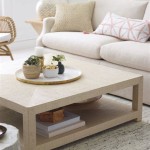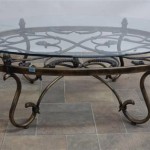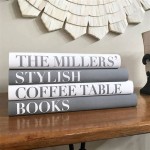How to Make a Tablecloth at Home with Fabric
A tablecloth is a simple but essential element of any dining experience, adding elegance and protection to your table. While purchasing a ready-made tablecloth is convenient, crafting one at home offers a unique opportunity to personalize your dining space with your own fabric choices and design preferences. This guide provides a comprehensive overview of how to make a tablecloth at home with fabric, outlining the necessary steps and considerations for a successful project.
1. Gather your Supplies:
Before embarking on your tablecloth creation journey, ensure you have all the essential tools and materials readily available. This list outlines the key supplies you will need:
- Fabric: Choose a fabric that suits your desired aesthetic and table size. Consider factors such as durability, stain resistance, and ease of care.
- Measuring tape: Essential for accurate measurements of your table.
- Scissors: Sharp scissors are necessary for precise cutting.
- Sewing machine: A sewing machine simplifies the stitching process, but hand-sewing is also an option.
- Thread: Select thread that matches the color of your fabric.
- Pins: Secure the fabric pieces together before sewing.
- Iron: An iron helps to press seams for a neat finish.
- Optional: Fabric marker or chalk for marking and measuring.
2. Determine Tablecloth Size and Shape:
The first step in creating your tablecloth is determining the desired size and shape. Consider the size of your table and the desired overhang. A standard overhang for a tablecloth is 12 inches, ensuring adequate coverage and draping. For a rectangular table, measure the length and width of the tabletop and add the desired overhang on all sides. For round tables, measure the diameter of the tabletop and add the overhang.
If you prefer a more tailored look, like a tablecloth that just fits the table without overhang, simply omit the overhang measurement. Consider the desired shape of your tablecloth. For most tables, a rectangular or square shape is common; however, if you have a round table, you can create a round tablecloth. For a more unique look, experiment with different shapes such as oval or hexagonal.
3. Cutting the Fabric:
Once you have determined the final dimensions, transfer your measurements to your chosen fabric. Use a fabric marker or tailor's chalk to mark the fabric and ensure accurate cutting. Double-check your measurements before cutting to avoid any errors. Cut the fabric based on the desired shape and measured dimensions. If you are creating a tablecloth with a finished hem, cut the fabric slightly larger to accommodate the hem allowance. A standard hem allowance is typically 1/2 inch.
4. Sewing the Hem:
Hemming the edges of your tablecloth adds a polished finish and ensures a durable edge. Fold the raw edges of your fabric inwards by 1/2 inch and press with an iron. Fold the edge inwards again by another 1/2 inch and press again. Secure the folded edge with pins to maintain its shape. Using your sewing machine or needle and thread, sew along the folded edge to create a neat and secure hem. If you choose to hand sew, use a running stitch or a backstitch for a strong and secure finish.
5. Finishing Touches:
After completing the hem, your basic tablecloth is ready. Consider additional finishing touches for a personalized touch. If you wish to add a decorative edge, you can sew a border or ribbon around the perimeter. Alternatively, you can use embroidery, applique, or other decorative techniques to embellish your tablecloth. Remember to choose elements that complement the overall style of your table and dining room.
6. Caring for Your Homemade Tablecloth:
Caring for your hand-crafted tablecloth is crucial for preserving its longevity and beauty. Follow the care instructions specific to your chosen fabric. For most fabrics, machine washing in cold water on a gentle cycle is recommended. Avoid using bleach or fabric softeners as these can damage the fabric. Hang dry your tablecloth to minimize wrinkles and prevent shrinkage. Ironing on a low heat setting can further reduce wrinkles and enhance the overall appearance of your tablecloth.

Diy How To Make A No Sew Ruffle Tablecloth For Less Than 10

Diy Table Cloth Making Stitching At Home म जप श बन न स ख Best Out Of Waste
How To Make Decorate With A Round Skirted Table Stroll Thru Life

Diy Fixable Round Table Cover With Old Saree Any Type Of Fabric Make At Home Easily Tablecovers

Diy How To Make Tie Dye Table Cloth At Home Series 2

Home Bargains Plus Rectangle Fabric Tablecloth Country Rustic Buffalo Plaid 52 X70 Inch Indoor Outdoor Easy Care Dining Table Cover Checked

Home Bargains Plus Rectangle Fabric Tablecloth Country Rustic Buffalo Plaid 60 X 104 Inch Indoor Outdoor Easy Care Dining Table Cover Checd

Fl Table Runner Abstract Contemporary Tablecloth Modern Home Textile Flower Branches Cover Console

Home Bargains Plus Rectangle Fabric Tablecloth Country Rustic Buffalo Plaid 60 X 120 Inch Indoor Outdoor Easy Care Dining Table Cover Checd

100x140cm Cotton Linen Fabric Print English Newspaper Diy Home Decor Table Cover
Related Posts








